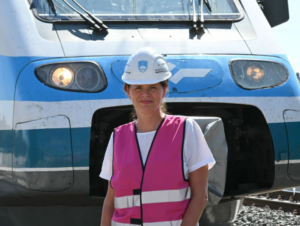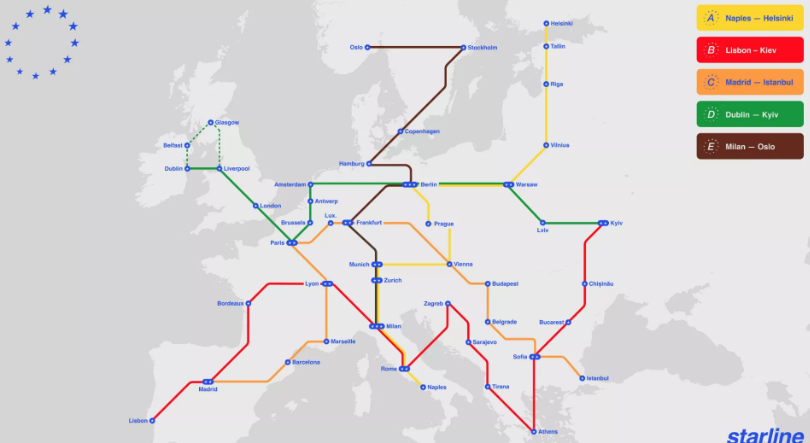The ambitious Starline project promises to revolutionise rail transport across Europe. The planned high-speed rail network will connect 39 European destinations, including Slovenia’s neighbours Croatia, Italy, Austria, Hungary, and even Serbia. But there is one important point missing from this story: Ljubljana – or, as its mayor Zoran Janković says, “the most beautiful city in the world”, will not be part of this system.
This is a huge missed opportunity for Slovenia, as high-speed rail could have significantly improved connections with the rest of Europe, facilitated travel and contributed to economic development.
The European Union has been promoting the development of rail transport for many years. In recent years, the night train service has improved and the number of Interrail users exceeds 400,000 a year, which shows that there is a great interest in rail travel. In Slovenia, however, we are faced with poor connections and outdated trains.
The Copenhagen-based think tank 21st Europe has presented an ambitious plan – the Starline project – to transform the pan-European rail system into a fast, unified and efficient transport model, similar to the metro in big cities. The aim is to modernise the fragmented, slow and expensive rail infrastructure and make it competitive with air transport.
What will the new rail system bring?
The Starline network will be 22,000 kilometres long, with trains running at speeds between 300 and 400 km/h. According to some estimates:
– Helsinki-Berlin will take only five hours to travel (meanwhile, it takes us five hours to travel by train from Maribor to Koper), – Kyiv-Berlin will become an easy and fast connection, – Milan-Munich will have a frequent and faster line connecting economic centres.
Another special feature of the system is that it will not be divided into classes, but will offer different zones – quiet places to work, family-friendly sections and connected stations with shops, restaurants and even cultural venues.
Ljubljana is not part of the future of European rail
Unfortunately, Ljubljana has been left out of the planned network, although many other cities in our vicinity are included. Among the 39 linked destinations are Zagreb, Milan, Vienna, Budapest and Belgrade. This is a major missed opportunity for Slovenia, which, as a country at the crossroads of important transport routes, could have benefited enormously from being part of the Starline system. But instead, passengers who want fast rail connections will have to travel to Zagreb, Vienna or Milan. By joining Starline, Slovenia could reduce its dependence on air and car transport, attract more tourists and improve the competitiveness of its economy.

How will Starline become a reality?
The project would operate on a publicly funded franchise model, with national rail operators operating individual lines and a new body, the European Railway Regulator (ERA), overseeing the system. This would allow for a unified operation, with the same technical standards and safety regulations across Europe. 21st Europe believes that the project could be operational by 2040, but this will require political support, coordination and, most importantly, funding at the level of the European Union.
What’s next for Slovenia?
The involvement of Croatia, Italy, Austria, Hungary and Serbia in the project shows that all neighbouring countries have recognised and been recognised for the importance of high-speed rail – only Slovenia has remained on the sidelines.
A. G.


